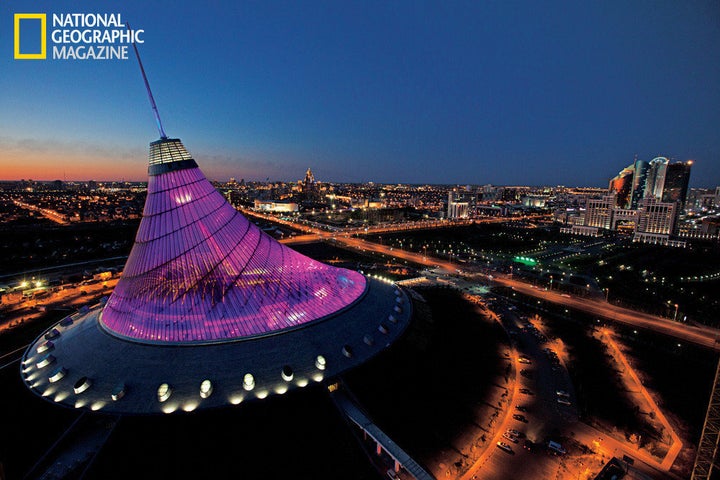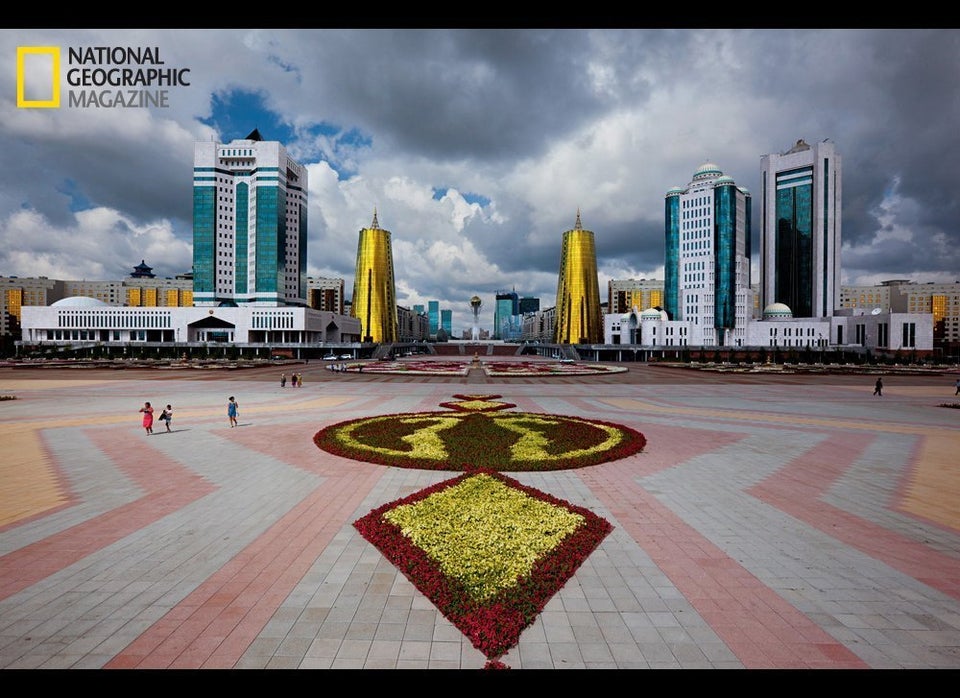
The following is an excerpt from the February issue of National Geographic magazine:
The new capital of Kazakhstan does not lack for exotic buildings, some of them best described by irreverent local nicknames: the banana (a bright yellow office tower), seven barrels (a cluster of apartment towers), the cigarette lighter (the Ministry of Transport and Communications). But one such structure, a national monument called the Baiterek, does not lend itself to nicknames, for the simple reason that it looks like nothing else. Not on this planet, anyway.
Baiterek, which means "tall poplar tree" in Kazakh, is a 318-foot tower buttressed by an exoskeleton of white-painted steel. At the top is a gold-tinted glass sphere. According to the epigraph at its base, the monument represents the Kazakh myth of Samruk, a sacred bird that every year lays a golden egg—the sun—in the crown of an enormous tree of life. Its designer? None other than Nursultan Nazarbayev, the steelworker turned strongman who has run the country since independence from the Soviet Union in 1991. He is said to have roughed out the original concept on a paper napkin.
Just as 18th-century tsar Peter the Great claimed a swampy patch of Baltic seacoast and stamped his brand on St. Petersburg—the national seat of power in imperial Russia—so, too, did Nazarbayev pick out a remote spot on which to plant the flag of a new Kazakhstan. Never mind that the previous capital, Almaty, is a temperate, pleasant city that few save the president wanted to leave. In late 1997 the government officially relocated to frigid, windswept Aqmola, 600 miles to the north, on the treeless steppe of Central Asia. The town was subsequently rechristened Astana—the Kazakh word for "capital"—a change that is commemorated every July 6 on Astana Day, which coincides with Nazarbayev's birthday.
Rich in oil and other mineral resources, Kazakhstan has lavished billions on the new capital, inviting some of the world's leading architects to showcase their work on the Left Bank of the Esil River, which separates the administrative "new city" from the older, mostly Soviet built district on the Right Bank. The results are eclectic, visually arresting, and not to everyone's taste. But love it or hate it, Astana is here to stay, its population having swelled from 300,000 to more than 700,000 in a decade. Along the way, it has become a billboard for Kazakh nationalism and aspirations—a statement as much as a city.
Read the full article in the February 2012 issue of National Geographic, available on newsstands now.
Photos: Gerd Ludwig/National Geographic
